The future HMS Medway spent 15 days in the Firth of Clyde testing her engines, manoeuvrability, sensors and main cannon, say the Royal Navy.
The vessel is understood to have operated with a mixed civilian/Royal Navy crew under Admiralty Trials Master Capt Graham Baxter.
The ship is the second of five 2,000-tonne River-class 2.0 vessels built for patrol duties in home waters and beyond by BAE Systems on the Clyde.
According to a news release:
“Throughout the trials package, all onboard systems were put through their paces including the Integrated Platform Management System, which controls and monitors most of the ship’s systems, and the Combat Management System which is used to collate sensor information and assist the command team in the decisions they make when in action.
The Automated Small Calibre Gun, the 30mm cannon on the forecastle, fired rounds at a ‘killer tomato’ inflatable target with impressive accuracy and the off-ship fire monitors tested correctly.”
Weapon engineer Chief Petty Officer Luke Travell was quoted as saying:
“Achieving so much during our trials period really shows how much effort we have all put in. BAE, ship’s staff and all the contractors should be really proud.”
Medway is now back in Glasgow undergoing a final period of planned maintenance and tweaks, as well as processing and analysing results from the trials to meet criteria which will her allow her to be accepted by the Royal Navy, before she sails down to her future home of Portsmouth in 2019, say the MoD.



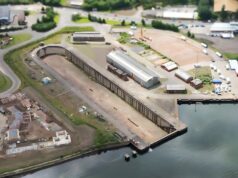
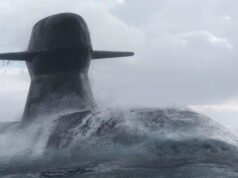
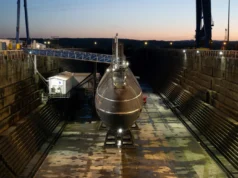

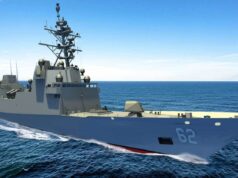
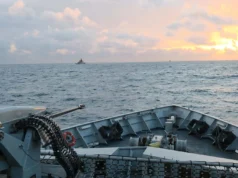

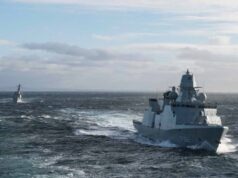
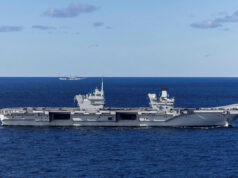
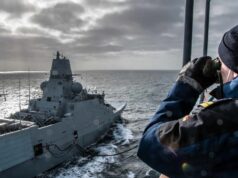

The Threat from “Killer Tomato’s” should never be underestimated !
Morning Captain.
Why the name?
Morning Daniele, I thought It was better than Master Bates !
Or Seaman Staines!
Lol! Or Sea Man Staines!
Exactly. “Roger the Cabin Boy” Ain’t exactly PC either.
Like anyone cares about PC on this site!!!
If you’ve seen sci-fi movie classic “Dark Star” you’ll know all about giant killer tomatoes, especially the threat of being tickled by one ?
I understand the military is most concerned about logaberies & cumquats…..
Loganberries, sorry.
Like these vessels.
I’d like more of them, better armed, at a better price, along with more T31 and RFA vessels.
Then the T26 T45 can concentrate on QEC and GIUK.
Such as replacing the 30mm with a 76mm, as with the HTMS Krabi which is based on same design as the Rivers?
Why not. I’m no expert at all on effectiveness of weapons systems.
I was thinking more along the lines of ASM and drone or helicopter.
There have been a fair few articles over on Naval Lookout/Save the RN about doing that. Agree with drone/ASM, though 76mm may be complicated. I’d worry about introducing a new gun type, and the maintenance/supply chain issues that arise from it. If the T31e is fitted with it, then it might be a worthwhile opportunity. Yet I would support previous proposals to add a couple of 20mm’s in a similar position to the 25mm’s used by the Brazilian ships.
I’d like to see them order a few more Rivers, with them being optimised for hosting the autonomous mine warfare technology we’re developing. Brand them as ‘Motherships’ and build them at Appledore with BAE support – just like the variations of the class being built in Thailand.
Are they large enough to host this tech, or would they require more modifications?
Agree to all.
Perhaps a cut and shut extend the hull of the r1’s, add a hanger.
Perhaps not. What planet are you on expat?
I like the B1 Rivers (except the absence of the flight deck). And though the B2 are more of the same thing really all going bigger has shown is that the design well robust in fundamentals (sea keeping, speed etc,) is not a particular good package. Compare B2 River with say the Fassmer 80m OPV.
Would be nice to see a minimalist armament, like 2-4 anti-ship missiles, 8 sort-range SAM, and an AS mortar system, and a 57 or 76 mmm gun. Of course that would required the sonar and radar systems to make them work. Ships this size carried a twin 4.5 inch turret in WW2. The price goes up, but so does capability.
My layperson’s proposal and aspirations for any up arming would be…
1 – Containerised drone. I believe the B2 design allows for space for a single 20′ container either side of the crane aft of the RIBs. Direct access to but not encroaching on the flight deck would make that ideal for hosting a drone or even two. First stop something like Schiebel S-100 to substantially increase surveillance reach but ideally spin up a UK project to build a next-gen competitor. The UK is particularly strong in many of the required technologies. S-100 can already host a sophisticated sensor package e.g. Thales I-Master and has demonstrated carrying and firing a couple of LMM but from looking at payload limits I doubt it could do both. A next-gen UK drone that could do both could be a valuable asset.
2 – Use a Sigma mount for the 30mm to add LMM. As a more ambitious option, Thales has used the Ajax’s CTA CT40 for its RAPIDFire system (https://www.thalesgroup.com/en/worldwide/defence/rapidfire) with I believe a marinised system also proposed. The system can also integrate with Starstreak which I believe uses the same launcher as LMM. Develop an equivalent of the Sigma mount for CT40, ideally with capacity for more than 7 LMM/Starstreak to give a RAPIDFire v2. You not only get a significant up-gunning of the River B2s that could now also fulfil a Phalanx role (200 tungsten pellet A-A ammo option) and have Starstreak to keep launch platforms at a distance but the RAPIDFire control system can control up to 6 stations so imagine what an uplift in capability the current 2 x Phalanx + 2 x DS30mm fit for our RFA vessels would get if replaced by a 4 station RAPIDFire v2 setup – all 4 guns able to operate as Phalanx replacements or engage surface vessels at much greater than 30mm range plus the LMM & Starstreak capabilities. Finally, I know that lots of people want Sea Ceptor on QEC but even without that with the 3 x Phalanx + 3 x 30mm (I think) stations used for RAPIDFire v2 that would be a big uplift in defensive capability.
Thorough post as always Julian.
As for myself also a layman on these things seems relatively cheap too for the uplift?
Any sign of the first of class entering service anytime soon?
Still no word on HMS Forth which should have been in the Falklands some months back. By the look of things it is taking as long to de-snag her as it was to build her! Let’s hope the good ship Medway is in better shape.
That Glue is a bugger to clean off !
I would also like to see a few more of these built, we haven’t got enough for a country with our coastline length, especially when you consider some will be based overseas (e.g. Falklands), some will be in repair/refit. Italy, Spain and France all have more O.P.V.s than us with shorter coastlines. When funds become available we should build another 2 for a total of 10. Also another batch of 3 Type 31s for a total of 8. Also 5 Wyvern class diesel electric submarines. This would be an inexpensive, yet effective, way to increase the size of the Royal Navy.
I too wonder whether these B2 vesselscould serve as the design start point to cover the upcoming MCM replacement requirement which will need to be addressed before too long imo.
I think the mcm replacement programme will sea smaller vessels designed to operate minehunting drones, a mosve away from ship based minehunting.
I think they will be bigger. A remote control ‘whatever’ will need to big enough to power itself, keep station in seas (littoral waters are lump), carry ROV’s etc. To make it worth you will need to carry two at least, probably three or four. A mother ship will need to be big enough to carry these ‘whatevers’ and davits etc. aren’t small. I think we would be looking at something like the RAN Leeuwin-class survey vessel in form factor. To increase deck space aft the bridge will need to be forward. Not an arrangement you would want in an OPV you expect to be at sea in all weathers. I say ‘whatever’ because I am not sure what form the drone would take; multi hull, semi-submersible, or whatever.
BMT have a proposal with their Venari 85 – https://www.bmtdsl.co.uk/bmt-design-portfolio/warships/bmt-venari-85/
I’ve no idea what the cost might be, or the range and sea states it could handle, but notwitstanding those issues it looks to have the possibility of being a very flexible vessel. I particularly like the dedicated UAV hangar and having both dedicated flight deck and aft working deck with plenty of garage and other space for ROVs, RIBs, containers etc.
Just a design of course but to me it looks an interesting MCM replacement candidate. Were it ever to be built I wonder how many of a River B2’s typical roles it could undertake as well.
At first I thought the OPVs would be a huge waste of money because they can’t engage warships. I bemoaned their weak armament and lack of hanger. Now I think the design is very clever. Essentially they amount to peacetime frigates. They can show the flag, patrol, conduct anti-piracy missions, board suspicious ships and protect fishing grounds, but they can’t engage warships. That’s fine. Any additional armament would be a waste of money. They are perfect for their peacetime role; big enough for reasonable seakeeping and range and properly equipped for their peacetime mission.
In wartime, they could be positioned to serve as refueling stations for staging helicopters. That simple function would greatly enhance the combat radius of our helos. Only in wartime need they be equipped with modular Sea Ceptor and/or Starstreak. During hostilities, they should be positioned far enough away from the action that their armament isn’t an issue
I sent I’ll think these ships are too expensive compared to prices paid be other nations for similar ships. That’s another story, though…